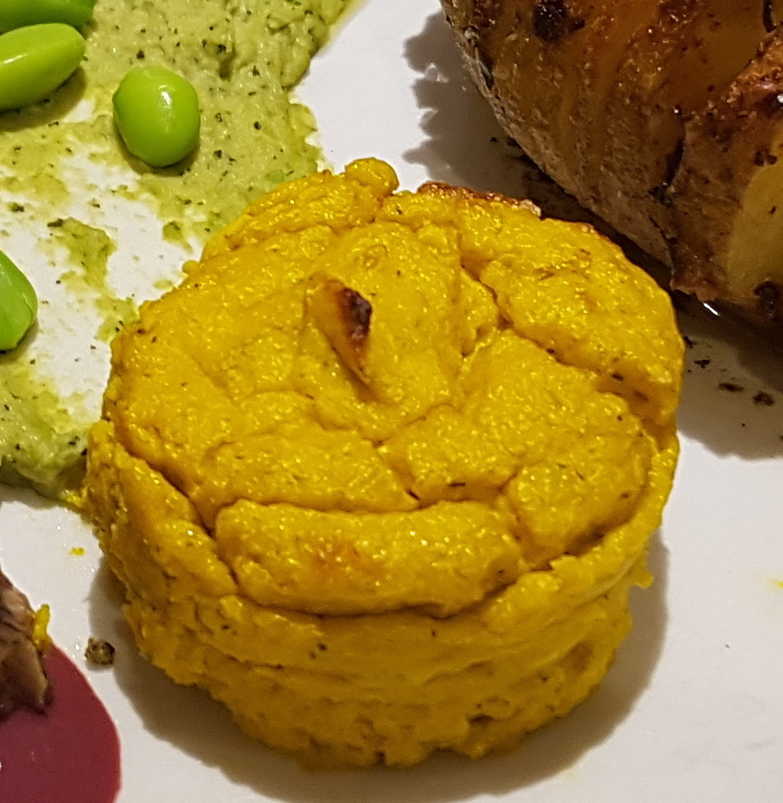
Lobster Ahoy
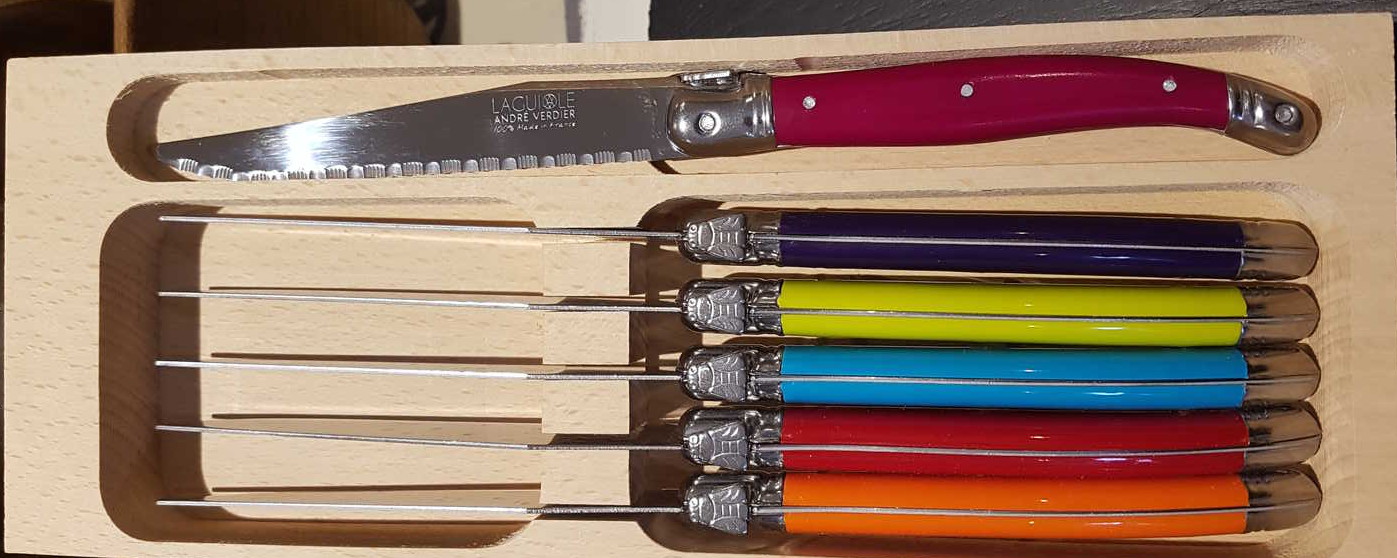
I got my brother a set of fine steak knives on his birthday for me to use. They're Laguiole - the fancy French ones with the little bumble bee emblems.
I had a craving for lobster. I don't know why.
I think it started with the Deconstructed grilled Caesar salad.
I had a craving for Caesar salad. I don't know why.
But now I can at least stab it with my Kurt's steely knives.
Fennel Gratin
side veg cheese
This is that rare thing - a tasty fennel dish.
Indeed, in her Cook, Eat, Repeat
Nigella Lawson says of it
I could lap up the fennel-vermouth-and-cheese-deepened cream with a spoon.
Which no doubt many would enjoy watching.
Her proportions make quite a lot of sauce for the amount of fennel, unless the bulbs are particularly huge.
So consider being generous with the fennel.
I also found the oven much too hot for the dish - I turned mine down to Gas Mark 3 or 4 which worked much better.
So keep an eye on that, and also don't overcook it or the sauce may split.
Which no doubt many would enjoy watching.
Her proportions make quite a lot of sauce for the amount of fennel, unless the bulbs are particularly huge.
So consider being generous with the fennel.
I also found the oven much too hot for the dish - I turned mine down to Gas Mark 3 or 4 which worked much better.
So keep an eye on that, and also don't overcook it or the sauce may split.
Serves 4
Ingredients
- 1kg fennel (it’s best to have 2 large bulbs rather than several smaller ones)
- 250ml dry white vermouth
- 75g Gruyère
- 2 fat cloves of garlic
- 250ml double cream
- 2 tsp sea salt flakes (or 1 tsp fine sea salt)
- a good grinding of pepper
- 1 x 15ml tbsp Dijon mustard
Potential Extras:- lemon zest
- anchovies
Heat the oven to 200°C/180°C Fan.
Cut off the chimney-like stems from the fennel, then halve the bulbs, cut away most of the core and cut each half into 3 or 4 wedges. Keep the offcuts for stock and the fronds for salads.
I know there’s not a lot of liquid in the pan, but so long as the lid fits tightly, it shouldn’t evaporate, and the fennel, as it softens, will give off liquid of its own. Once it comes to the boil, turn the heat down and let it simmer robustly for 15 minutes or until the fennel wedges feel soft when you prod them with a fork.
Lift up the lid and check after 10 minutes. Remove the pan from the heat and, with tongs or a couple of forks, transfer the now bedraggled fennel to a round, shallow dish of about 25cm diameter or a 2 litre gratin dish.
Reserve the cooking liquid.
Measure the double cream into a jug, then mince or grate in the garlic, add the sea salt flakes, grind over the pepper, and stir in the grated cheese and the Dijon mustard followed by the vermouthy-fennel juices from the pan.
Whisk to mix before pouring over the softened fennel in its dish. Use a spoon and fork to turn the fennel in the cream, so that it’s well coated, leaving it in a single layer. You may need to press down a bit on the fennel to make sure it’s submerged, though don’t worry if some of it is poking up.
Bake in the oven for 1 hour, until the gratin is bubbling, its top bronzed in places. Let the dish sit for about 10 minutes out of the oven before serving.
To Make Ahead – Assemble the dish to the point of filling the casserole dish, then press food wrap onto surface to submerge fennel and refrigerate.
Bake, allowing an extra 15 minutes, until piping hot.
Cut off the chimney-like stems from the fennel, then halve the bulbs, cut away most of the core and cut each half into 3 or 4 wedges. Keep the offcuts for stock and the fronds for salads.
The fronds make an attractive decoration for the served pieces.
Put these wedges into a heavy-based pan that comes with a tightly fitting lid – I use one of 22cm diameter – and pour over the vermouth,
then bring to the boil over high-ish heat with the lid on, so listen out for the bubbling.I know there’s not a lot of liquid in the pan, but so long as the lid fits tightly, it shouldn’t evaporate, and the fennel, as it softens, will give off liquid of its own. Once it comes to the boil, turn the heat down and let it simmer robustly for 15 minutes or until the fennel wedges feel soft when you prod them with a fork.
Lift up the lid and check after 10 minutes. Remove the pan from the heat and, with tongs or a couple of forks, transfer the now bedraggled fennel to a round, shallow dish of about 25cm diameter or a 2 litre gratin dish.
Reserve the cooking liquid.
Reduce the cooking liquid by ½ or ⅔ to enrich the sauce.
Meanwhile, finely grate the cheese and peel the garlic.Measure the double cream into a jug, then mince or grate in the garlic, add the sea salt flakes, grind over the pepper, and stir in the grated cheese and the Dijon mustard followed by the vermouthy-fennel juices from the pan.
Whisk to mix before pouring over the softened fennel in its dish. Use a spoon and fork to turn the fennel in the cream, so that it’s well coated, leaving it in a single layer. You may need to press down a bit on the fennel to make sure it’s submerged, though don’t worry if some of it is poking up.
Bake in the oven for 1 hour, until the gratin is bubbling, its top bronzed in places. Let the dish sit for about 10 minutes out of the oven before serving.
To Make Ahead – Assemble the dish to the point of filling the casserole dish, then press food wrap onto surface to submerge fennel and refrigerate.
Bake, allowing an extra 15 minutes, until piping hot.
Nigella's not wrong - it's quite delicious!
Parmesan Roasted Cauliflower
side veg cheese
I copied these instructions from Don't Go Bacon My Heart
(though the recipe is oddly bacon-free), but you'll find versions all over the internet.
I think you need to be generous enough with the butter to give the florets a good coating - something for the parmesan to stick to.
Though the result is a bit on the oily side.
Frankly, the best way to serve them is to use half the cauliflower to make a purée - boil half until soft and blend it with cream, seasoning, (perhaps even parmesan of its own), and beat in some pieces of cold butter to enrich it.
Then serve a smear of the purée topped with nodules of crispy roast cauliflower florets to give contrasting textures.
Pictured here is a sample serving I knocked up with fillet steak on buttered kale with Dijon mustard, dressed with foraged mushrooms and gorgonzola sauce, and an Aubergine, Tomato and Honeyed Goat's Cheese Stack with sun-dried tomato cream.
Yum!
I think you need to be generous enough with the butter to give the florets a good coating - something for the parmesan to stick to.
Though the result is a bit on the oily side.
Frankly, the best way to serve them is to use half the cauliflower to make a purée - boil half until soft and blend it with cream, seasoning, (perhaps even parmesan of its own), and beat in some pieces of cold butter to enrich it.
Then serve a smear of the purée topped with nodules of crispy roast cauliflower florets to give contrasting textures.
Pictured here is a sample serving I knocked up with fillet steak on buttered kale with Dijon mustard, dressed with foraged mushrooms and gorgonzola sauce, and an Aubergine, Tomato and Honeyed Goat's Cheese Stack with sun-dried tomato cream.
Yum!
Serves 4
Ingredients
- 1 cauliflower
- ½ cup / 40g Parmesan, finely grated
- 2 tbsp butter, melted and the rest!
- 2 cloves of garlic, minced
- a few sprigs of fresh thyme
- salt & black pepper, to taste
Peel away the outer leaves of the cauliflower and dice or break up into 1-1½" chunks.
Combine with 2 tbsp melted butter, a few sprigs of thyme, 2 minced cloves of garlic and a hefty pinch of salt and pepper.
Sprinkle over grated parmesan.
Pop in the oven at 200°C/390°F for 20-30mins or until golden brown and fork tender. If it starts to blacken too quickly, reduce the temp.
In any case I don't recommend cranking up the temp as the parmesan will burn before the cauliflower is cooked.
Combine with 2 tbsp melted butter, a few sprigs of thyme, 2 minced cloves of garlic and a hefty pinch of salt and pepper.
Sprinkle over grated parmesan.
Pop in the oven at 200°C/390°F for 20-30mins or until golden brown and fork tender. If it starts to blacken too quickly, reduce the temp.
In any case I don't recommend cranking up the temp as the parmesan will burn before the cauliflower is cooked.
I went for a cooler oven - Gas Mark 4-5/350-375°F/160-175°C for half an hour or so.
It seemed to give the better result.
Use a spatula to scrape off the cauliflower, collecting all those crispy bits stuck in between!
It seemed to give the better result.
Rather nice, even without the thyme. Especially accompanied by a creamy cauliflower purée.
Cream of Mushroom Soup
soup veg
Something to do with all the boletus mushrooms that you find on the long walk to the nearest butchers, and which you're definitely sure aren't poisonous.
The Vermouth is a nice alternative to the more usual sherry flavouring, and the soy sauce just helps to boost the bass notes.
The Vermouth is a nice alternative to the more usual sherry flavouring, and the soy sauce just helps to boost the bass notes.
Serves 4
Ingredients
- butter
- 1kg wild mushrooms, sliced
- 6 garlic cloves, minced
- 2 banana shallots, minced
- glass vermouth
- tablespoon soy sauce
- 500ml chicken stock
- 2 tablespoons mascarpone
- 500ml double cream
- seasoning
Serving Options:- tarragon, roughly chopped
- grated bitter chocolate!
- truffle oil
Melt a generous amount of butter in an enormous pan and fry the mushrooms until the water cooks off and a reasonable amount of fond has built up.
You may need to add more butter or olive oil.
Add the shallots and then the garlic and sweat them down.
Deglaze with the Vermouth. Bubble. Add the soy sauce and the stock and simmer for a good while then blend. Reheat, melt in the mascarpone, stir through as much double cream as you like.
Season, and serve with an extra swirl of cream and a scattering of roughly chopped tarragon or a drizzle of truffle oil.
Or perhaps, intriguingly, a grating of bitter chocolate!
Add the shallots and then the garlic and sweat them down.
Deglaze with the Vermouth. Bubble. Add the soy sauce and the stock and simmer for a good while then blend. Reheat, melt in the mascarpone, stir through as much double cream as you like.
Season, and serve with an extra swirl of cream and a scattering of roughly chopped tarragon or a drizzle of truffle oil.
Or perhaps, intriguingly, a grating of bitter chocolate!
Excellent!
Adjust the thickness with more (or less) stock or by adding milk as you like. Don't chop the tarragon too finely or it will darken and clump up messily.
Adjust the thickness with more (or less) stock or by adding milk as you like. Don't chop the tarragon too finely or it will darken and clump up messily.
Herb Crusted Rack of Lamb
main meat
Buy a lamb rack with 2-3 cutlets per person.
Make sure the butcher (or you) separate the bottom, fat end of the chops in the rack from the chine bone so that you can cut them free and serve them as individual chops after roasting. As I wish I had done.
Make sure to peel the papery skin off the fat too.
For a more attractive serving you can French the ribs to remove the meat around the last inch or two of the thin end of the ribs and scrape them clean. Now they'll look pretty and white after roasting, especially if you wrap them in a protective foil glove.
This method of par-roasting the lamb before adding the crust gives you more control over preventing it from burning. Though given how much of the herb crust falls off the joint while you're cutting it into cutlets to serve, I'm not entirely sure it's worth the trouble. But it can look rather nice when it works.
Here's a photo of how a herb-crusted chop might look served with a Garlic Butter Hasselback Potato, a Carrot Soufflé, Minted Edamame Bean Purée and dressed with wild Sloe and Red Wine Sauce.
Make sure the butcher (or you) separate the bottom, fat end of the chops in the rack from the chine bone so that you can cut them free and serve them as individual chops after roasting. As I wish I had done.
Make sure to peel the papery skin off the fat too.
For a more attractive serving you can French the ribs to remove the meat around the last inch or two of the thin end of the ribs and scrape them clean. Now they'll look pretty and white after roasting, especially if you wrap them in a protective foil glove.
This method of par-roasting the lamb before adding the crust gives you more control over preventing it from burning. Though given how much of the herb crust falls off the joint while you're cutting it into cutlets to serve, I'm not entirely sure it's worth the trouble. But it can look rather nice when it works.
Here's a photo of how a herb-crusted chop might look served with a Garlic Butter Hasselback Potato, a Carrot Soufflé, Minted Edamame Bean Purée and dressed with wild Sloe and Red Wine Sauce.
Serves 3
Ingredients
- 1 rack of lamb
- salt & freshly ground black pepper
- rub of olive oil
- 80g breadcrumbs
- 50g parsley
- 10g grated parmesan
- 40g mixed herbs I had mint, thyme and tarragon
- 2-3 tablespoons Dijon mustard
Finely chop your herbs, then pulse in a blender together with the grated parmesan and the bread to make fine crumbs.
Score the fat into diamonds without cutting into the meat if you like. Oil and season the joint, then fry the fat side in a hot frying pan until it browns and crisps. Fry any other parts of the joint you can get to for a minute or two.
Roast on a rack over a roasting tin at Gas Mark 4 until the centre of the lamb reaches about 5°C below your preferred target temperature (46°C for rare, 41°C for medium). Let the lamb rest, lightly tented in foil, for 10 minutes or so, and raise the oven temperature a little (perhaps to Gas Mark 5).
Smear the fatty side of the joint with mustard and press the breadcrumb mixture over it so it (mostly) stays attached, then return the lamb to the oven for about 5 minutes until the crust is golden. Remove, slice, and serve.
I added some garlic too - why not?!
You could use less, or no, breadcrumbs for a lighter coating. You might need to add a little oil then too to get it to cohere. Though that might be a good idea anyway, it tends to fall apart otherwise.
Make sure the joint is up to room temperature before cooking.You could use less, or no, breadcrumbs for a lighter coating. You might need to add a little oil then too to get it to cohere. Though that might be a good idea anyway, it tends to fall apart otherwise.
Score the fat into diamonds without cutting into the meat if you like. Oil and season the joint, then fry the fat side in a hot frying pan until it browns and crisps. Fry any other parts of the joint you can get to for a minute or two.
Roast on a rack over a roasting tin at Gas Mark 4 until the centre of the lamb reaches about 5°C below your preferred target temperature (46°C for rare, 41°C for medium). Let the lamb rest, lightly tented in foil, for 10 minutes or so, and raise the oven temperature a little (perhaps to Gas Mark 5).
Smear the fatty side of the joint with mustard and press the breadcrumb mixture over it so it (mostly) stays attached, then return the lamb to the oven for about 5 minutes until the crust is golden. Remove, slice, and serve.
A bit fiddly, but quite nice. Very pretty green coating if you avoid burning it!
I have some later experiences
which contribute some recommendations as to cheese quantities (more - its the melty cheese which really holds the crust together),
and crust-cooking time (less - the better to retain the bright green colouration).
Sloe and Red Wine Sauce
sauce veg
First forage your sloes (Blackthorne berries).
I've been discovering a lot of my local public footpaths and came across a spiky hedge laden with fat black berries with their characteristic blue bloom. Apparently they aren't too common - indeed they're the only one I've seen on my travels.
They're quite bitter/sour, so I expected the sauce to be too tart, but it actually works pretty well, if you get the balance of stock, wine, sweeteners and sloes right. I was originally thinking of making a gin-based sauce until Rick Stein persuaded my to try red wine instead.
Good call!
I've been discovering a lot of my local public footpaths and came across a spiky hedge laden with fat black berries with their characteristic blue bloom. Apparently they aren't too common - indeed they're the only one I've seen on my travels.
They're quite bitter/sour, so I expected the sauce to be too tart, but it actually works pretty well, if you get the balance of stock, wine, sweeteners and sloes right. I was originally thinking of making a gin-based sauce until Rick Stein persuaded my to try red wine instead.
Good call!
Serves 2
Ingredients
- butter
- 3 cloves garlic, minced
- 1 banana shallot, minced
- parsley, tarragon, thyme
- 100g sloes
- a few juniper berries
- red wine
- stock
- brown sugar or honey
Sweat the shallots and the garlic in the butter until they soften.
Throw in a mixture of herbs, give them a good stir, then add a good glass of red wine and bubble up.
Add the stock, sloes and juniper berries and cook until the berries break down into mush.
Strain. Season. Add sugar and/or honey to taste.
Enrich by beating in small chunks of cold butter if the sauce needs it.
Throw in a mixture of herbs, give them a good stir, then add a good glass of red wine and bubble up.
Add the stock, sloes and juniper berries and cook until the berries break down into mush.
Strain. Season. Add sugar and/or honey to taste.
Enrich by beating in small chunks of cold butter if the sauce needs it.
Such a pretty colour!
I served mine with lamb, which was surprisingly good, but it might go even better with pork.
I served mine with lamb, which was surprisingly good, but it might go even better with pork.
Carrot Soufflé
side veg cheese
I made an eighth portion with one egg.
The mixture filled three small ¼ cup souffleé dishes.
I missed out the cumin, and may have overdone the dill a little.
I missed out the cumin, and may have overdone the dill a little.
Serves 8
Ingredients
- 2pounds carrots (about 4½ cups), chopped
- ½ cup ricotta cheese
- ¼ teaspoon powdered cumin
- 3 tablespoons fresh dill, minced
- Salt and freshly ground pepper to taste
- 8eggs, separated
Preheat oven to 425°F/Gas Mark 7. Butter well and chill 8 1¼-cup souffle dishes.
Boil carrots in salted water until soft. Drain well.
Place carrots in food processor or blender with ricotta, cumin, dill, salt and pepper. Puree well. You should have about 3 cups. Transfer to mixing bowl.
Add yolks to mixture and blend well with wire whisk. In another bowl whisk whites until they form soft peaks. Fold ¼ of whites into carrot mixture, then remainder. Taste for seasoning.
Place souffle dishes on baking sheet and fill to rim with mixture. Before placing in oven run thumb around rim of each to remove any overflow, which could cling and prevent souffle from rising fully. Bake for approximately 10 minutes.
Boil carrots in salted water until soft. Drain well.
Place carrots in food processor or blender with ricotta, cumin, dill, salt and pepper. Puree well. You should have about 3 cups. Transfer to mixing bowl.
Add yolks to mixture and blend well with wire whisk. In another bowl whisk whites until they form soft peaks. Fold ¼ of whites into carrot mixture, then remainder. Taste for seasoning.
Place souffle dishes on baking sheet and fill to rim with mixture. Before placing in oven run thumb around rim of each to remove any overflow, which could cling and prevent souffle from rising fully. Bake for approximately 10 minutes.
Bit bland, if I'm honest.
Maybe with some added carrot juice for stronger flavour?
Garlic Butter Hasselback Potatoes
side staple veg
Quite a novel way of serving a cross between a baked and a roast potato.
Supposedly invented by Sherlock Holmes at the Hasselback falls.
Or possibly by Leif Elisson, trainee chef at Stockholm's Hasselbacken restaurant.
Anyway, in its pure form it consists of sliced potatoes and butter, but it's good to add at least garlic, and possibly herbs.
Other toppings are available.
I've seen suggestions for making this garlic recipe without adding water to the baking dish.
But I'd just add the water.
Trust me, if you have any bits of garlic in the bottom of the dry dish they'll burn to cinders. You need to add water as soon as they start to colour, and keep the dish watered until the end.
Alternatively push the garlic slices into the potato cuts, which will have the added benefit of holding them open to receive more buttery blessings.
Supposedly invented by Sherlock Holmes at the Hasselback falls.
Or possibly by Leif Elisson, trainee chef at Stockholm's Hasselbacken restaurant.
Anyway, in its pure form it consists of sliced potatoes and butter, but it's good to add at least garlic, and possibly herbs.
Other toppings are available.
I've seen suggestions for making this garlic recipe without adding water to the baking dish.
But I'd just add the water.
Trust me, if you have any bits of garlic in the bottom of the dry dish they'll burn to cinders. You need to add water as soon as they start to colour, and keep the dish watered until the end.
Alternatively push the garlic slices into the potato cuts, which will have the added benefit of holding them open to receive more buttery blessings.
Serves 1 per Potato
Ingredients
- floury potatoes
- garlic, crushed or sliced
- thyme leaves
- butter, lots of butter
- salt & freshly ground pepper
Preheat the oven to 200°C/400°F/Gas Mark 6.
With a sharp knife, slice the potato(es) across their width vertically, leaving the bottoms intact. You can do this by laying a couple of wooden spoon handles or chopsticks along the potato sides to act as stoppers. Or place the potatoes in a wooden spoon, if they're small enough.
With a sharp knife, slice the potato(es) across their width vertically, leaving the bottoms intact. You can do this by laying a couple of wooden spoon handles or chopsticks along the potato sides to act as stoppers. Or place the potatoes in a wooden spoon, if they're small enough.
Or just cut them carefully part-way through!
For best results you want to slice them quite thinly - about 2mm or the thickness of a pound coin.
Floury potatoes are probably best - they'll make the most of the buttery juices. Though you can use waxy varieties if you prefer.
Melt the butter with the garlic and thyme in an oven-proof dish just large enough to hold the potatoes.
Generously coat the potatoes in the butter, give them a grating of salt and pepper and put them in the oven.
Give them just long enough to begin to colour the garlic, then baste them again and add enough boiling water to come about ⅓ of the way up their sides.
Cook them for 1½ hours, basting regularly, until the tops are crispy and the water has mostly boiled away.
If you haven't levered the potato cuts open with slices of garlic,
then you'll probably need to prise them open a little with a knife or your basting spoon so the buttery juices get right in the cracks.
Be gentle so as not to break their bottoms.
Rules to live by!
Serve with a spoonful of the butter.
Rules to live by!
Good if you get the balance right between crispy and fluffy.
If you want to avoid burning the herbs you could add them later in the cooking.
Might be good to season the potatoes after the cuts have opened up too.
Grilled Caesar Salad
salad fish cheese
An excellent Caesar salad deconstruction.
Serves 4
Ingredients
For the Dressing:- 1 clove garlic, peeled and minced I may have used more 😉
- 4 anchovy fillets, rinsed and minced
- 3 egg yolks
- 2 teaspoons Dijon mustard
- ¾ cup extra-virgin olive oil
- 1 tablespoon Worcestershire sauce
- 1 tablespoon red-wine vinegar
- Kosher salt and freshly ground black pepper to taste
For the Vinaigrette:- 1 tablespoon lime zest
- 1 lime, juiced, approximately 2 tablespoons
- 1 tablespoon white balsamic vinegar I used Chardonnay wine vinegar
- ½ cup extra-virgin olive oil
- Kosher salt and freshly ground black pepper to taste
For the Salad:- 2 tablespoons extra-virgin olive oil
- 2 heads romaine lettuce, trimmed, cut lengthwise into quarters or halves
- ½ cup grated Parmesan cheese
Make the Caesar dressing:
Put the minced garlic into a medium bowl, and add the minced anchovies.
Using a whisk, mix and mash these ingredients together until they form a paste.
Add the Worcestershire sauce, and continue to whisk until the dressing achieves a mayonnaise-like consistency. Add the red-wine vinegar, whisk to combine, then season to taste with salt and pepper. Set aside.
Make the vinaigrette:
Combine the lime zest, lime juice, balsamic vinegar and oil in another small bowl, and whisk to combine.
Season to taste with salt and pepper. Set aside.
Make the salad:
Neatly trim the lettuce head bottoms, and possibly the tops. You might want to bring the bottoms to a stylish point. Quarter or halve them.
Drizzle the olive oil over the quartered heads of lettuce.
Lightly grill these over a low fire or under a British grill - you can let the leafy ends hang outside so they don't burn too quickly for 15 to 20 seconds on each side, until they have a light goldenness, and remove to a platter.
Using a pastry brush or a small spoon, paint the Caesar dressing over the lettuce, making sure to get dressing between the leaves.
Return lettuces to edges of grill or again with the British grill, sprinkle with Parmesan and cover for 30 seconds to allow the cheese to soften and toast.
Remove lettuce to a platter, and drizzle with lime vinaigrette.
Serve two (quarter) pieces each, alongside a steak. Or a lobster!
Put the minced garlic into a medium bowl, and add the minced anchovies.
Using a whisk, mix and mash these ingredients together until they form a paste.
I mashed the garlic and the anchovies to a paste with some salt and pepper using the side of a heavy knife.
Add the egg yolks and the mustard, and begin to whisk them with the paste. Add a small stream of olive oil while continuing to whisk.
Add more olive oil, whisking all the while, until the dressing begins to emulsify.Add the Worcestershire sauce, and continue to whisk until the dressing achieves a mayonnaise-like consistency. Add the red-wine vinegar, whisk to combine, then season to taste with salt and pepper. Set aside.
Make the vinaigrette:
Combine the lime zest, lime juice, balsamic vinegar and oil in another small bowl, and whisk to combine.
Season to taste with salt and pepper. Set aside.
Make the salad:
Neatly trim the lettuce head bottoms, and possibly the tops. You might want to bring the bottoms to a stylish point. Quarter or halve them.
Drizzle the olive oil over the quartered heads of lettuce.
Lightly grill these over a low fire or under a British grill - you can let the leafy ends hang outside so they don't burn too quickly for 15 to 20 seconds on each side, until they have a light goldenness, and remove to a platter.
Using a pastry brush or a small spoon, paint the Caesar dressing over the lettuce, making sure to get dressing between the leaves.
Return lettuces to edges of grill or again with the British grill, sprinkle with Parmesan and cover for 30 seconds to allow the cheese to soften and toast.
Remove lettuce to a platter, and drizzle with lime vinaigrette.
Serve two (quarter) pieces each, alongside a steak. Or a lobster!
Goddamn lovely!
I suppose you could fry up some small croutons to scatter on top if you wanted to more obviously simulate the Caesar principle.
The final drizzle of limey dressing gives a perfect zesty finish.
I suppose you could fry up some small croutons to scatter on top if you wanted to more obviously simulate the Caesar principle.
The final drizzle of limey dressing gives a perfect zesty finish.
Grilled Lobster
main fish
Note to Self: Throw the tomalley away.
Despite being considered a delicacy by some, it's too strongly flavoured for the delicate sweetness of grilled lobster.
Or any lobster product, if I'm honest.
This is a totally easy dish to make. It's just a bit messy that's all.
First you need a live lobster. Make sure it's still alive though - twitching, or keen to re-curl its tail if you straighten it out.
Lobsters are full of bacteria which will rapidly poison their meat once they die, so you must cook them immediately. You only have an hour or so after they die before their meat becomes dangerous!
Fortunately, they're pretty hardy and will stay alive in the fridge for a day or possibly two covered in a thick wadge of wet newspaper or towels. My fishmonger kindly let me have the lidded polystyrene fish box to keep him in. They certainly won't last that long in a bucket of water, even if it is seawater, unless you have an aerator.
Though they will do just fine in an oxygenated sea water fish tank.
This is a totally easy dish to make. It's just a bit messy that's all.
First you need a live lobster. Make sure it's still alive though - twitching, or keen to re-curl its tail if you straighten it out.
Lobsters are full of bacteria which will rapidly poison their meat once they die, so you must cook them immediately. You only have an hour or so after they die before their meat becomes dangerous!
Fortunately, they're pretty hardy and will stay alive in the fridge for a day or possibly two covered in a thick wadge of wet newspaper or towels. My fishmonger kindly let me have the lidded polystyrene fish box to keep him in. They certainly won't last that long in a bucket of water, even if it is seawater, unless you have an aerator.
Though they will do just fine in an oxygenated sea water fish tank.
Serves 2
Ingredients
- garlic/lemon/parsley flavoured compound butter
- lobster
Rinse the lobster.
If it's as energetic as mine was it will now be covered in shredded newspaper.
Put your live lobster, still with the bands on its claws, on a chopping board in a large oven dish. This will get messy - there will be juices and you want to keep them all.
Take a heavy knife and cut down through the cross mark on the lobster's head to dispatch it quickly. Move the blade to split the head apart. Then cut the lobster completely in half back through its tail.
Pour out and keep all the lobster juices for your stock or bisque.
From each body half scoop out the gritty sandy stomach sac from behind the eyes. There will be a quantity of green tomalley - the lobster's liver/pancreas. You can remove it or leave it in there - some consider it a delicacy. Ed: Don't leave it in there!
If it's a lady lobster there may be black eggs filling the tail, which turn red on cooking. You can remove these too, if you prefer.
You can rinse the lobster halves to clean them thoroughly if you're worried about stomach grit or shell fragments.
Crack the claws open so it will be easier to extract the cooked meat. You can do this with the heel (the cutting edge closest to the handle) of a heavy knife - chop into the back of each claw where the wrist would be, and twist to open it up.
Heat up your grill, in Britain that's an overhead grill, which is handy for not losing all the buttery juices.
Smear or drizzle your lobster with the flavoured butter, making sure to get some into the cracked claws, then put it under the grill.
Cook until the shells redden, the flesh firms up and turns opaque, and the butter foams and begins to cook on the parts closest to the grill.
You may need to leave the claws in for longer to cook the meat inside, but don't overdo everything. The meat will turn rubbery if cooked for too long.
Put your live lobster, still with the bands on its claws, on a chopping board in a large oven dish. This will get messy - there will be juices and you want to keep them all.
Take a heavy knife and cut down through the cross mark on the lobster's head to dispatch it quickly. Move the blade to split the head apart. Then cut the lobster completely in half back through its tail.
Pour out and keep all the lobster juices for your stock or bisque.
From each body half scoop out the gritty sandy stomach sac from behind the eyes. There will be a quantity of green tomalley - the lobster's liver/pancreas. You can remove it or leave it in there - some consider it a delicacy. Ed: Don't leave it in there!
If it's a lady lobster there may be black eggs filling the tail, which turn red on cooking. You can remove these too, if you prefer.
You can rinse the lobster halves to clean them thoroughly if you're worried about stomach grit or shell fragments.
Crack the claws open so it will be easier to extract the cooked meat. You can do this with the heel (the cutting edge closest to the handle) of a heavy knife - chop into the back of each claw where the wrist would be, and twist to open it up.
Heat up your grill, in Britain that's an overhead grill, which is handy for not losing all the buttery juices.
Smear or drizzle your lobster with the flavoured butter, making sure to get some into the cracked claws, then put it under the grill.
Cook until the shells redden, the flesh firms up and turns opaque, and the butter foams and begins to cook on the parts closest to the grill.
You may need to leave the claws in for longer to cook the meat inside, but don't overdo everything. The meat will turn rubbery if cooked for too long.
OMG gorgeous!
Lobster Bisque
soup fish
I made my bisque using a pre-grilled lobster which I'd already eaten half of.
But otherwise you should separate out the lobster meat you want to serve with the soup and par-cook it.
You can steam or boil the claws whole then break the meat out afterwards.
Don't overdo the cooking or the lobster meat will turn rubbery.
Keep the cooking water - I cut my lobster in half for grilling in a large oven tin so as to keep the tasty liquids which squirt out everywhere. Make sure you do the same.
If you want to process some of the mirepoix into the soup, but want to avoid blending in the lobster shells and having to then strain out all the shelly shards, you can fry (some of) the minced vegetables separately and blend everything up after straining out the lobster parts.
Don't overdo the cooking or the lobster meat will turn rubbery.
Keep the cooking water - I cut my lobster in half for grilling in a large oven tin so as to keep the tasty liquids which squirt out everywhere. Make sure you do the same.
If you want to process some of the mirepoix into the soup, but want to avoid blending in the lobster shells and having to then strain out all the shelly shards, you can fry (some of) the minced vegetables separately and blend everything up after straining out the lobster parts.
Serves 4
Ingredients
- lobster shells and spare parts
- lobster juices
- lobster meat
- butter
- olive oil
- 1 carrot, minced
- 2 sticks celery, minced
- 1 onion, minced
- 3 garlic cloves, minced
- 2 tablespoons tomato purée
- brandy
- dry sherry or white wine
- tarragon
- parsley
- bay leaf
- chicken stock
- small handful white rice, to thicken
- pinch cayenne pepper
- double cream
To Serve:- parsley, tarragon, chives, minced
Chop or break up all the lobster shells and spare parts.
Heat the butter and oil in a large pan over high heat and sear the shells, adding them gradually so as not to overwhelm the pan.
Cook until there's a decent amount of fond and browning, then add the minced vegetables and garlic, cook until they're softened and also beginning to brown.
De-glaze the pan with brandy, flaming it off, then bubble in some wine or sherry if you like to cook off the alcohol.
Throw in a handful of parsley and tarragon, stalks and all, and a couple of bay leaves.
Add any lobster juice you've been keeping, any lobster cooking water and chicken stock to cover everything in the pan.
Simmer for an hour.
Now you need to strain carefully, a couple of times through muslin I use catering hairnets to good effect. Wash the shells in more fresh water to get all of the flavour out of them, and strain that out too.
Now you'll need to reduce the stock a little. You can add a small handful of white rice here for thickening. Also some fresh vegetable mirepoix, if you like.
Put the reduced stock into a blender with the rice, reserved vegetables if you like, and the cream. Blend until very smooth. You might want to push it through a sieve again at this point.
Reheat the soup gently without boiling.
Season and add enough cayenne to give just a hint of heat.
Meanwhile fry up the lobster meat in generous amount of foaming butter for a minute or two until just cooked through.
Toss with minced parsley, tarragon and chives.
Ladle the hot soup into serving bowls. Garnish with the lobster meat and herby butter.
Heat the butter and oil in a large pan over high heat and sear the shells, adding them gradually so as not to overwhelm the pan.
Cook until there's a decent amount of fond and browning, then add the minced vegetables and garlic, cook until they're softened and also beginning to brown.
If you prefer you can fry some of the vegetables separately, keeping them to blend into the strained soup later.
Add tomato purée and cook for a couple of minutes until the bitterness cooks off.De-glaze the pan with brandy, flaming it off, then bubble in some wine or sherry if you like to cook off the alcohol.
Throw in a handful of parsley and tarragon, stalks and all, and a couple of bay leaves.
Add any lobster juice you've been keeping, any lobster cooking water and chicken stock to cover everything in the pan.
Simmer for an hour.
Now you need to strain carefully, a couple of times through muslin I use catering hairnets to good effect. Wash the shells in more fresh water to get all of the flavour out of them, and strain that out too.
Now you'll need to reduce the stock a little. You can add a small handful of white rice here for thickening. Also some fresh vegetable mirepoix, if you like.
Put the reduced stock into a blender with the rice, reserved vegetables if you like, and the cream. Blend until very smooth. You might want to push it through a sieve again at this point.
Reheat the soup gently without boiling.
Season and add enough cayenne to give just a hint of heat.
Meanwhile fry up the lobster meat in generous amount of foaming butter for a minute or two until just cooked through.
Toss with minced parsley, tarragon and chives.
Ladle the hot soup into serving bowls. Garnish with the lobster meat and herby butter.
A bit too lobstery for my taste, if I'm honest, but a good soup otherwise.
Maybe I should have discarded the tomalley?
Butter Maître d'Hôtel
ingredient veg
You can, of course, use any flavourings of choice for this compound butter.
Herbs, lemon, orange, chilli, anchovy and garlic are classics, but the sky's the limit.
Need some suggestions? You could try Basil, Parmesan and Sun-Dried Tomato; Chilli, Coriander and Lime; or how about Horseradish and Chives?
Mince, grate, grind or crush your selected ingredients and beat them into the soft butter. Preferably unsalted.
If you want something approaching fluffy restaurant-style whipped butter you might need to use an electric mixer and a couple of tablespoons of milk or water to loosen the composition.
Start beating at a low speed and work it faster as the butter becomes creamier.
Herbs, lemon, orange, chilli, anchovy and garlic are classics, but the sky's the limit.
Need some suggestions? You could try Basil, Parmesan and Sun-Dried Tomato; Chilli, Coriander and Lime; or how about Horseradish and Chives?
Mince, grate, grind or crush your selected ingredients and beat them into the soft butter. Preferably unsalted.
If you want something approaching fluffy restaurant-style whipped butter you might need to use an electric mixer and a couple of tablespoons of milk or water to loosen the composition.
Start beating at a low speed and work it faster as the butter becomes creamier.
Makes ½ a Cup
Ingredients
- ½ cup butter, softened
- 1-2 garlic cloves, crushed
- 1 tsp lemon zest
- 1 tblsp lemon juice
- 1-2 tblsps parsley, minced
Leave the butter out to soften for at least half an hour.
Mince parsley, mince or crush garlic, zest some lemon rind and beat into the butter.
Drizzle in a little lemon juice and increase your whipping speed until everything is incorporated and the butter has creamy or even fluffy texture to your taste.
You can use a piece of cling film or parchment paper to shape the butter into a roll and then chill it in the fridge so you can easily slice off rounds for future use.
Mince parsley, mince or crush garlic, zest some lemon rind and beat into the butter.
Drizzle in a little lemon juice and increase your whipping speed until everything is incorporated and the butter has creamy or even fluffy texture to your taste.
You can use a piece of cling film or parchment paper to shape the butter into a roll and then chill it in the fridge so you can easily slice off rounds for future use.
Perfect for grilling your lobster. Or dressing your steak.
Parma Wrapped Asparagus
side meat cheese
I used Parma ham. Other prosciuttos are also available.
Serves 4
Ingredients
- 1lb thick asparagus spears
- 8oz prosciutto, thinly sliced
- olive oil
- freshly ground black pepper
Optional Toppings:- lemon zest
- grated parmesan cheese
- ½ cup Philadelphia cream cheese with herbs and 1 tblsp water
Preheat the oven to 200°C/200°F/Gas Mark 6.
Snap off any woody asparagus spear ends.
Wrap each spear in a super-thin slice of prosciutto, unless they're rather thin, in which case use two or three at a time.
Wrap them spirally from the bottom, keeping tension on the ham so they wrap tightly.
Lay the asparagus on a baking tray, drizzle their exposed ends with olive oil, scatter with black pepper and bake for 8-10 minutes until the asparagus is tender and the ham is crispy at the edges. Give them a shake to roll them around half way through.
Scatter with lemon zest, and/or grated parmesan.
Alternatively you could make a sauce by loosening Philadelphia cream cheese with a little water, optionally adding some chopped herbs and mayonnaise, and heating in the microwave on medium for 45 seconds.
Snap off any woody asparagus spear ends.
Wrap each spear in a super-thin slice of prosciutto, unless they're rather thin, in which case use two or three at a time.
Wrap them spirally from the bottom, keeping tension on the ham so they wrap tightly.
Lay the asparagus on a baking tray, drizzle their exposed ends with olive oil, scatter with black pepper and bake for 8-10 minutes until the asparagus is tender and the ham is crispy at the edges. Give them a shake to roll them around half way through.
Scatter with lemon zest, and/or grated parmesan.
Alternatively you could make a sauce by loosening Philadelphia cream cheese with a little water, optionally adding some chopped herbs and mayonnaise, and heating in the microwave on medium for 45 seconds.
Meh. Tends to turn the asparagus a bit leathery, if I'm honest, and the parma didn't really crisp. Maybe another ham would have worked better.
Potato Gnocchi with Parmesan
staple italian pasta veg cheese
Often served with a robust sauce of some kind, I thought they went quite well with grilled lobster,
for which you need something absorbent like these fluffy little tampons to soak up the buttery juices.
Because you want the gnocchi mixture to be quite dry, lest it disintegrate in the cooking water, it's good to bake the potatoes. If you're boiling them then do so whole in their skins, peel and rice immediately then let them steam dry afterwards.
You shouldn't attempt to make gnocchi with waxy potatoes - use Désirée, King Edwards, Estima, Maris Piper, Russets etc.
Because you want the gnocchi mixture to be quite dry, lest it disintegrate in the cooking water, it's good to bake the potatoes. If you're boiling them then do so whole in their skins, peel and rice immediately then let them steam dry afterwards.
You shouldn't attempt to make gnocchi with waxy potatoes - use Désirée, King Edwards, Estima, Maris Piper, Russets etc.
Serves 5
Ingredients
- 500g floury potato
- 125-150g plain flour
- 2 tblsps beaten egg about ⅔ egg
- pinch of salt
For the Sauce:- butter
- parmesan, grated
Bake the potatoes at Gas Mark 6 for an hour or so until nice and soft.
Scoop out the insides and pass through a potato ricer immediately.
Spread them out on your worktop to cool and steam dry for a few minutes
Sieve the lesser amount of flour over the potato to start with. The less flour you use the lighter will be the result.
Add the beaten egg, season lightly, and using your hands, incorporate everything into a dough. A scraper might prove useful.
Knead briefly until the mixture is smooth but for no longer. Add extra flour only as absolutely necessary or you'll toughen the gnocchi.
Cover the dough with a tea towel to stop it from drying out while you work with portions;
Take a quarter of the dough and roll into a 2cm thick sausage, then cut into 3cm pieces.
Traditionally you now press grooves into the gnocchi. There seem to be two approaches - one where you keep the barrel shape, another where you squidge the pieces into little tubes:
If you have a gnocchi board, either roll the dough pieces down it, or squish the pieces along it so they form grooved curls, like curls of butter.
If you don't have a gnocchi board you can use the front of a fork. Either roll the little barrels against the tines or again try squishing the pieces with your thumb, rocking gently, so they form those curls curving around to make a little hole down the middle.
Another approach is to just press the gnocchis against your thumb with the fork on the other side.
Make sure to flour the pieces or the board so they don't stick.
I had trouble squidging them without smearing them to nothing, so I made fatter gnocchi barrels. Whatever approach works for you.
Place the rolled gnocchi on a plate lightly dusted with flour or fine semolina. Try not to let them pile up or they'll clump together. Cook them soon while they're still dry.
Boil a large pot of salted water. Carefully roll the gnocchi into the water, in batches as necessary to avoid crowding.
They cook quickly and are ready when they float to the top in about 30 seconds, at which point you have to scoop them out immediately with a strainer. Or use a pan with a removable basket.
Meanwhile heat a knob of butter in a small frying pan until it foams and sprinkle in grated parmesan. Add the gnocchi as they cook along with any cooking water which clings to them. Make sure they gnocchi are well-coated in the butter sauce and serve, sprinkled with extra grated parmesan.
Spread them out on your worktop to cool and steam dry for a few minutes
Sieve the lesser amount of flour over the potato to start with. The less flour you use the lighter will be the result.
Add the beaten egg, season lightly, and using your hands, incorporate everything into a dough. A scraper might prove useful.
Knead briefly until the mixture is smooth but for no longer. Add extra flour only as absolutely necessary or you'll toughen the gnocchi.
Cover the dough with a tea towel to stop it from drying out while you work with portions;
Take a quarter of the dough and roll into a 2cm thick sausage, then cut into 3cm pieces.
Traditionally you now press grooves into the gnocchi. There seem to be two approaches - one where you keep the barrel shape, another where you squidge the pieces into little tubes:
If you have a gnocchi board, either roll the dough pieces down it, or squish the pieces along it so they form grooved curls, like curls of butter.
If you don't have a gnocchi board you can use the front of a fork. Either roll the little barrels against the tines or again try squishing the pieces with your thumb, rocking gently, so they form those curls curving around to make a little hole down the middle.
Another approach is to just press the gnocchis against your thumb with the fork on the other side.
Make sure to flour the pieces or the board so they don't stick.
I had trouble squidging them without smearing them to nothing, so I made fatter gnocchi barrels. Whatever approach works for you.
Place the rolled gnocchi on a plate lightly dusted with flour or fine semolina. Try not to let them pile up or they'll clump together. Cook them soon while they're still dry.
Boil a large pot of salted water. Carefully roll the gnocchi into the water, in batches as necessary to avoid crowding.
They cook quickly and are ready when they float to the top in about 30 seconds, at which point you have to scoop them out immediately with a strainer. Or use a pan with a removable basket.
Meanwhile heat a knob of butter in a small frying pan until it foams and sprinkle in grated parmesan. Add the gnocchi as they cook along with any cooking water which clings to them. Make sure they gnocchi are well-coated in the butter sauce and serve, sprinkled with extra grated parmesan.
Can be a bit tricky to get the right mixture so they neither dissolve into the cooking water nor turn into rubber bullets.
Can also be a bit tricky to shape without squashing them to nothing.
But very good when you get them right.
Can also be a bit tricky to shape without squashing them to nothing.
But very good when you get them right.
Spinach with Dill and Brown Butter
side veg
Dill and spinach is a fine combination of flavours.
They're good enough on their own, but you could add garlic and a splash of cream too if you liked.
They're good enough on their own, but you could add garlic and a splash of cream too if you liked.
Ingredients
- butter
- spinach
- dill
Options:- garlic, sliced
- a splash of double cream
Strip the fatter stalks out of the dill and roughly chop the fronds.
Pinch the stalks off the spinach leaves, wash them and pat them dry.
Heat a generous lump of butter in a saucepan until it foams, then begins to brown.
Pinch the stalks off the spinach leaves, wash them and pat them dry.
Heat a generous lump of butter in a saucepan until it foams, then begins to brown.
Throw in some sliced garlic if you like.
Add the spinach and toss until it wilts.
Bubble in a splash of double cream if you like.
Add a little seasoning, stir through the dill and serve.
Rather good.
Roast Fennel
side veg vegan
Some oddly precise small quantities here from The Kitchn.
I just chucked stuff in, but then poured in even more olive oil.
I've got a feeling I also included some chopped black olives. And the chilli pepper flakes.
Go wild!
I've got a feeling I also included some chopped black olives. And the chilli pepper flakes.
Go wild!
Serves 4-6
Ingredients
- 2 large fennel bulbs (about 2 pounds)
- 2 tablespoons olive oil
- 1 1/2 teaspoons kosher salt
- 1/4 teaspoon freshly ground black pepper
- 1/4 teaspoon ground fennel or ground anise (optional)
- 1/8 teaspoon red pepper flakes (optional)
- 1 medium lemon
- dill, chopped optional
Heat the oven to 200°C/400°F/Gas Mark 6.
Trim the stalks, fronds, and any browned edges from 2 large fennel bulbs. Reserve some fronds for garnish. Halve each fennel lengthwise through the root, then cut each half into 4 wedges.
Transfer to a baking sheet. Drizzle with olive oil and the seasonings. Add pepper flakes if you like. Finely grate the zest of 1 medium lemon over the fennel. Toss with your hands until well-combined, then arrange the wedges cut-side down in a single layer.
Cover the baking sheet tightly with aluminum foil. Bake in the centre of the oven until the wedges are knife-tender, about 25 minutes. Uncover and toss the fennel. Return the baking sheet to the oven and bake uncovered until deep golden-brown in spots and the edges are caramelized, 25 to 30 minutes more. Baste occasionally Meanwhile, cut the zested lemon in half.
Juice one lemon half over the fennel (reserve the remaining half for another use) and toss to combine. Transfer to a serving platter and top with the reserved fennel fronds.
Trim the stalks, fronds, and any browned edges from 2 large fennel bulbs. Reserve some fronds for garnish. Halve each fennel lengthwise through the root, then cut each half into 4 wedges.
Transfer to a baking sheet. Drizzle with olive oil and the seasonings. Add pepper flakes if you like. Finely grate the zest of 1 medium lemon over the fennel. Toss with your hands until well-combined, then arrange the wedges cut-side down in a single layer.
Cover the baking sheet tightly with aluminum foil. Bake in the centre of the oven until the wedges are knife-tender, about 25 minutes. Uncover and toss the fennel. Return the baking sheet to the oven and bake uncovered until deep golden-brown in spots and the edges are caramelized, 25 to 30 minutes more. Baste occasionally Meanwhile, cut the zested lemon in half.
Juice one lemon half over the fennel (reserve the remaining half for another use) and toss to combine. Transfer to a serving platter and top with the reserved fennel fronds.
Not bad. Scatter with chopped dill to serve, if your fennel didn't come with fronds. Or if you prefer dill.
Creamed Potato with Mascarpone
side veg cheese
A delicious, glossy, potato cream.
Ingredients
- floury potatoes
- double cream
- garlic, crushed
- butter
- mascarpone
- salt & white pepper
Bake or boil, I suppose your floury potatoes at Gas Mark 6 for an hour.
Meanwhile set a saucepan of double cream to bubbling gently over a very low heat. Add crushed garlic, a fat knob of butter and a couple of tablespoons of mascarpone. The cream should have thickened nicely by the time the potatoes are ready.
Push them through a potato ricer and beat into the cream mix.
Season.
Meanwhile set a saucepan of double cream to bubbling gently over a very low heat. Add crushed garlic, a fat knob of butter and a couple of tablespoons of mascarpone. The cream should have thickened nicely by the time the potatoes are ready.
Push them through a potato ricer and beat into the cream mix.
Season.
If you baked the potatoes, you can cut them in half, scrape them out, pop the skins back in the oven for 10 minutes to crisp up, then fill them with scoops of creamed potato to serve.
Braised Red Cabbage with Anchovies, Capers and Lemon
side fish
Yet another braised red cabbage.
This one brings sour notes, not unpleasant but there is also a hint of bitterness to it. I think I'd skip the rosemary oil if I made it again.
I'm getting kind of sick of rosemary oil, if I'm honest.
This one brings sour notes, not unpleasant but there is also a hint of bitterness to it. I think I'd skip the rosemary oil if I made it again.
I'm getting kind of sick of rosemary oil, if I'm honest.
Ingredients
- red cabbage
- red onion
- red wine vinegar
- anchovies
- capers
- black olives optional
- lemon zest
- garlic
- rosemary oil, or butter go with butter
- salt & ground pepper
Preheat the oven to Gas Mark 5.
Thinly slice the red cabbage and red onion.
Crush or mince the garlic and the anchovies, the capers and/or black olives if using.
Mix all together with the lemon zest. Fill a baking dish.
Season with salt and pepper. Drizzle with red wine vinegar, and rosemary oil or melted butter.
Cover tightly and bake for an hour until the cabbage is tender.
Thinly slice the red cabbage and red onion.
Crush or mince the garlic and the anchovies, the capers and/or black olives if using.
Mix all together with the lemon zest. Fill a baking dish.
Season with salt and pepper. Drizzle with red wine vinegar, and rosemary oil or melted butter.
Cover tightly and bake for an hour until the cabbage is tender.
Different approach - still prefer the pure balsamic one though!
Devilled Kidneys
breakfast meat
I imagine the devil's kidneys would be much too hot for comfortable consumption.
Otherwise lamb's or calf's kidneys are probably reckoned the most delicate.
Pigs kidneys are stronger tasting and have a tendency to reflect the pig's eclectic diet. They are best cut into smaller chunks.
Ox kidneys are larger, tougher and will need more cooking than in this recipe.
Add as much cayenne devilment as you like to the floury coating.
Whatever you do, as you eat them don't think about urine. The smell of urine. The taste of urine. Just don't think about it.
Otherwise lamb's or calf's kidneys are probably reckoned the most delicate.
Pigs kidneys are stronger tasting and have a tendency to reflect the pig's eclectic diet. They are best cut into smaller chunks.
Ox kidneys are larger, tougher and will need more cooking than in this recipe.
Add as much cayenne devilment as you like to the floury coating.
Whatever you do, as you eat them don't think about urine. The smell of urine. The taste of urine. Just don't think about it.
Feeds One
Ingredients
- 2-4 calf or lamb kidneys
- oil or butter
- 1 tblsp flour
- ½ tsp mustard powder
- ½ tsp paprika
- a few pinches of cayenne pepper
- salt & pepper
- chicken stock
- sourdough or wholemeal bread, toasted
Options:- brandy
- whisky
- redcurrant jelly
- red wine or sherry vinegar
- mustard
- cream
- Worcestershire sauce
- anchovies or anchovy sauce
- herbs, chopped
Mix the flour and dry spices and a little seasoning. Add up to ¼ tsp of cayenne pepper to taste.
Remove any suet and outer membrane from your kidneys, slice them in half lengthwise, and snip away the hard fatty core.
Roll them thoroughly in the seasoned flour.
Heat butter, or oil, or butter and oil in a frying pan until shimmering.
Fry the kidneys over high heat for a couple of minutes per side until they colour nicely and are cooked through but still pink in the middle.
Now it's up to you:
You can de-glaze the pan with liquor like brandy or whisky.
You can stir in a jam or a jelly.
You might splash in vinegar, Worcestershire sauce, anchovies or more mustard.
You might add some liquid like a stock, wine or cream.
Spoon your preferred concoction and all its juices over a piece of good toast, dress with chopped herbs like parsley, tarragon or chives, and chow down.
Remove any suet and outer membrane from your kidneys, slice them in half lengthwise, and snip away the hard fatty core.
Roll them thoroughly in the seasoned flour.
Heat butter, or oil, or butter and oil in a frying pan until shimmering.
Fry the kidneys over high heat for a couple of minutes per side until they colour nicely and are cooked through but still pink in the middle.
Now it's up to you:
You can de-glaze the pan with liquor like brandy or whisky.
You can stir in a jam or a jelly.
You might splash in vinegar, Worcestershire sauce, anchovies or more mustard.
You might add some liquid like a stock, wine or cream.
Spoon your preferred concoction and all its juices over a piece of good toast, dress with chopped herbs like parsley, tarragon or chives, and chow down.
Delicious!
Damn it. Now I'm thinking of urine.
Damn it. Now I'm thinking of urine.
Chimichurri
sauce veg vegan mexican
Apparently an authentically Argentinian chimichurri salsa will use only parsley and oregano, no coriander (sorry, cilantro) and no lime.
You can substitute dried oregano, in a pinch 🙂. And if you're a Tex-Mexican feel free to add coriander anyway, like you do to every other bloody dish you make.
You can substitute dried oregano, in a pinch 🙂. And if you're a Tex-Mexican feel free to add coriander anyway, like you do to every other bloody dish you make.
Serves 4
Ingredients
- 50g of parsley, fresh, finely chopped
- 3 garlic cloves, minced
- 1 tbsp of oregano, fresh, finely chopped
- 1-2 red chillies, deseeded, finely chopped
- 50ml red wine vinegar, or sherry vinegar
- 2 tsps of sweet smoked paprika optional
- hot pepper sauce optional
- lime juice optional
- 50g coriander, minced optional
- 150ml of extra virgin olive oil
- ½ tsp salt
- ½ tsp ground black pepper
Mix everything else, then gradually beat in the oil. Adjust the flavours and season as necessary.
Leave the mixture to infuse for at least 10 minutes but preferably a couple of hours before using.
An excellent steak sauce, but also good for dressing vegetables or mashed potatoes or, well, anything really.
I added some finely chopped fresh thyme leaves instead of the oregano, and it worked pretty well I thought.
Roast Carrots with Crushed Peppercorns and Coriander Seeds
side veg vegan
Feel free to serve them dressed with crumbled feta cheese, and a herby vinaigrette.
Serves 4
Ingredients
- 1lb carrots, chantenay preferably
- 1 tblsp coriander seeds
- 1 tsp black peppercorns
- salt
- 2-4 tblsps olive oil
Optional Toppings:- parsley, chopped
- feta cheese, crumbled
- herby vinaigrette
Preheat oven to 220°C/430°F.
Scrub or peel the carrots and halve lengthways if large.
Dry-fry the peppercorns and coriander seeds then lightly crush them in a mortar.
Toss together the carrots, coriander seeds, olive oil, salt and pepper in an ovenproof dish. Roast, tossing once, until golden brown and tender, 20-40 minutes.
Dress if you like before serving.
Scrub or peel the carrots and halve lengthways if large.
Dry-fry the peppercorns and coriander seeds then lightly crush them in a mortar.
Toss together the carrots, coriander seeds, olive oil, salt and pepper in an ovenproof dish. Roast, tossing once, until golden brown and tender, 20-40 minutes.
Dress if you like before serving.
Pretty good carrots.
Steak and Teriyaki Sauce
main meat
A terrific and easy way to cook a thick sirloin steak is to cook it on the fatty edge until a nice crust has formed and much of the fat has rendered, then sear the meaty sides.
It's also really good served with a teriyaki sauce, though one here flavoured, slightly sacrilegiously, with garlic and ginger.
You can also serve a fat fillet medallion with teriyaki sauce, which might be even better! Don't cook fillet this way though, you should fry that more gently in butter à la Filet McPhail.
It's also really good served with a teriyaki sauce, though one here flavoured, slightly sacrilegiously, with garlic and ginger.
You can also serve a fat fillet medallion with teriyaki sauce, which might be even better! Don't cook fillet this way though, you should fry that more gently in butter à la Filet McPhail.
Serves 1 Absolute Unit
Ingredients
- 2" sirloin steak minimum
For the Teriyaki Sauce:- ½ cup soy sauce
- ½ cup mirin
- ½ cup sake
- ¼ cup sugar, or less to taste
- rosemary sprig
- garlic, sliced
- ginger, sliced
Make sure to have your butcher cut the sirloin steak thick enough to stand on its edge.
If you can, salt the steak all over, and leave it on a wire rack uncovered in the fridge overnight to tenderise and dry out.
Season the steak generously with salt & ground pepper. Place it on the fat edge in a frying pan over a low to medium heat and leave it to render for up to half an hour. Pour away excess fat as you go if necessary.
When the edge is sufficiently browned and crusted, turn the heat up to high and sear the other sides and, if you like, edge of the meat.
Check the temperature of the centre of the steak with a meat thermometer to see if it's ready - 45°C for rare, 50°C for medium - remember it will continue to rise another 5 degrees as it rests.
If not you can either put in a warm oven until it reaches your target temperature, or you can add a hefty lump of butter to the frying pan along with some herbs and garlic and vigorously baste the steak over high heat with the browning foam of flavour.
Lift out. Tent loosely in foil and leave to rest for 10-15 minutes before serving.
Meanwhile, make the teriyaki sauce. Mix all the liquids together in a clean saucepan.
Slice or shred in the garlic and ginger sacrilege, I know. Add some rosemary or other herb if you like.
Add sugar to taste; you probably won't want it quite as sweet as a regular teryiaki sauce. Simmer over a low to medium heat for about 15 minutes until the sauce thickens slightly and small bubbles begin to rise.
Strain out the solids and serve with your perfectly cooked steak.
If you can, salt the steak all over, and leave it on a wire rack uncovered in the fridge overnight to tenderise and dry out.
Season the steak generously with salt & ground pepper. Place it on the fat edge in a frying pan over a low to medium heat and leave it to render for up to half an hour. Pour away excess fat as you go if necessary.
When the edge is sufficiently browned and crusted, turn the heat up to high and sear the other sides and, if you like, edge of the meat.
Check the temperature of the centre of the steak with a meat thermometer to see if it's ready - 45°C for rare, 50°C for medium - remember it will continue to rise another 5 degrees as it rests.
If not you can either put in a warm oven until it reaches your target temperature, or you can add a hefty lump of butter to the frying pan along with some herbs and garlic and vigorously baste the steak over high heat with the browning foam of flavour.
Lift out. Tent loosely in foil and leave to rest for 10-15 minutes before serving.
Meanwhile, make the teriyaki sauce. Mix all the liquids together in a clean saucepan.
Slice or shred in the garlic and ginger sacrilege, I know. Add some rosemary or other herb if you like.
Add sugar to taste; you probably won't want it quite as sweet as a regular teryiaki sauce. Simmer over a low to medium heat for about 15 minutes until the sauce thickens slightly and small bubbles begin to rise.
Strain out the solids and serve with your perfectly cooked steak.
Gorgeous!
Beware of over-reducing the teriyaki sauce though - it will get very salty if you do that. You'll have to settle for a thin coating sauce.
Or add some cornflour slurry.
Beware of over-reducing the teriyaki sauce though - it will get very salty if you do that. You'll have to settle for a thin coating sauce.
Or add some cornflour slurry.
Paneer and Edamame Bean Curry
curry veg
Had some paneer leftover from a Cookery Course curry,
and a freezer full of edamame beans - so what's a chef to do?
Serves 4
Ingredients
- ghee
- 1 medium onion
- half a dozen garlic cloves
- 2-3 inches ginger
- 1 tblsp dried fenugreek
- 1 tsp cumin seeds
- 1 tsp turmeric
- 1 tsp coriander powder
- 1 tsp garam masala
- 1 tsp chilli powder if you can't get fresh green chillies
- ½ tsp salt
- 2 cups frozen edamame beans
- 200g paneer
Herbs:- coriander
- dill
- green chillies
Cube the paneer. Brown the pieces all over in the ghee if you'd like them golden.
Blend the onion, garlic, ginger and dried fenugreek into a paste, adding enough oil to lubricate.
Fry the purée in ghee until the harshness cooks off and the oil separates.
Mix the spice powders with a little water to make a paste and add to the onion mix. Stir and fry gently until the aromas mellow and the oil separates again.
Meanwhile blanch the beans for a few minutes until they are tender.
Blend about three quarters of the beans with any herbs you like, some green chillies if you have them and enough cream and a splash of water to loosen.
Mix the edame purée into the fried onion paste, carefully add the paneer and the un-blended beans. Cover and heat through gently.
Serve with a few extra chillies, and some chopped coriander leaves, if you like.
Blend the onion, garlic, ginger and dried fenugreek into a paste, adding enough oil to lubricate.
Fry the purée in ghee until the harshness cooks off and the oil separates.
Mix the spice powders with a little water to make a paste and add to the onion mix. Stir and fry gently until the aromas mellow and the oil separates again.
Meanwhile blanch the beans for a few minutes until they are tender.
Blend about three quarters of the beans with any herbs you like, some green chillies if you have them and enough cream and a splash of water to loosen.
Mix the edame purée into the fried onion paste, carefully add the paneer and the un-blended beans. Cover and heat through gently.
Serve with a few extra chillies, and some chopped coriander leaves, if you like.
My Local Fucking Supermarket™ had no fresh chillies so I added some red chilli flakes with the cumin seeds and chilli powder with the rest.
I also had a lot of dill to use up, which went surprisingly well with the beans I thought. I'd probably recommend trying coriander though.
I also had a lot of dill to use up, which went surprisingly well with the beans I thought. I'd probably recommend trying coriander though.
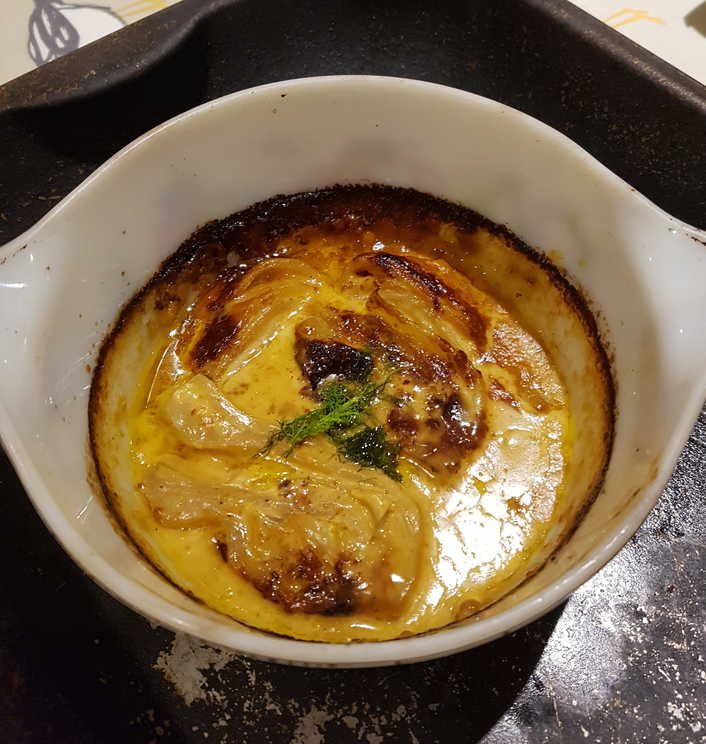
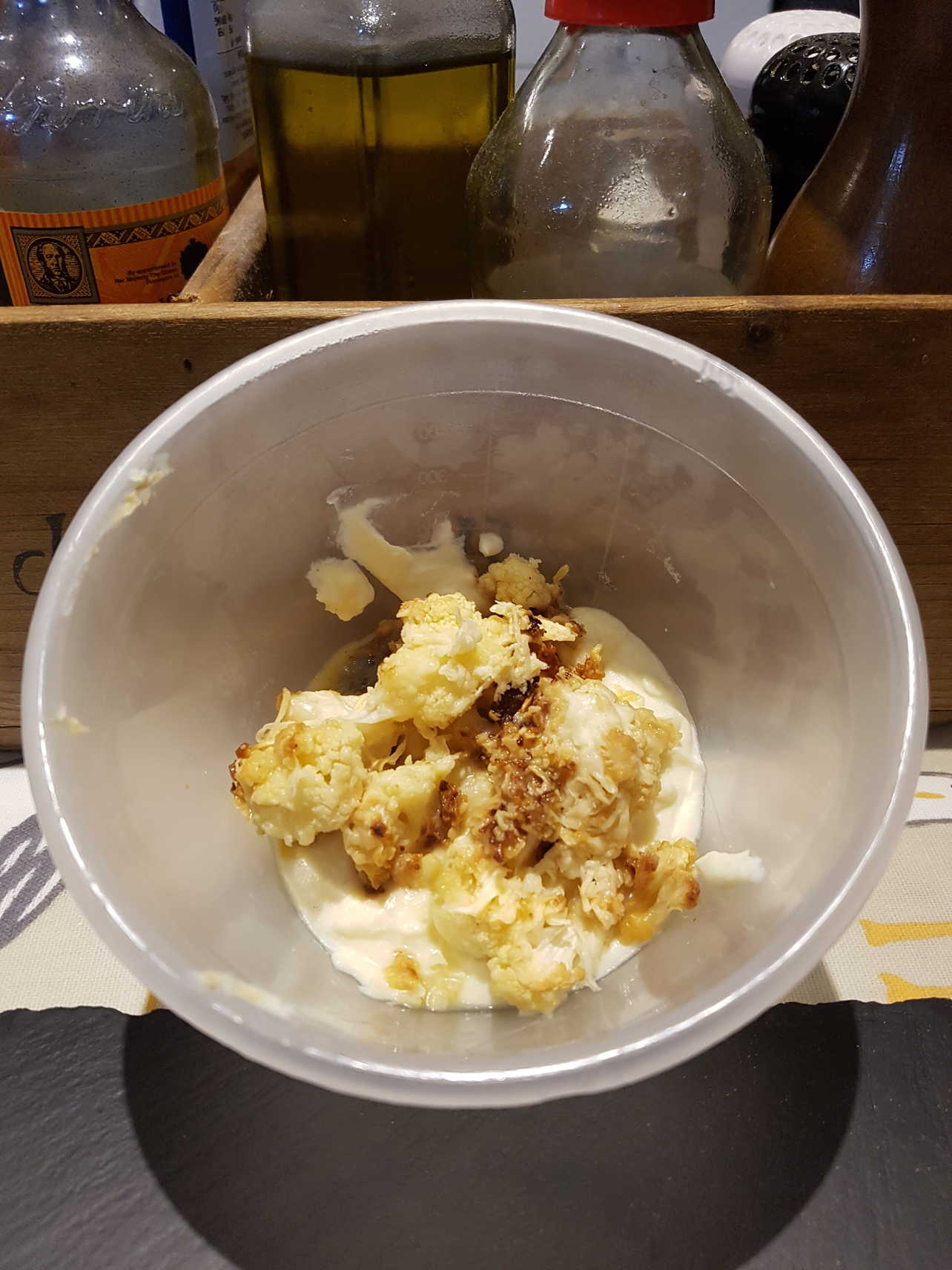
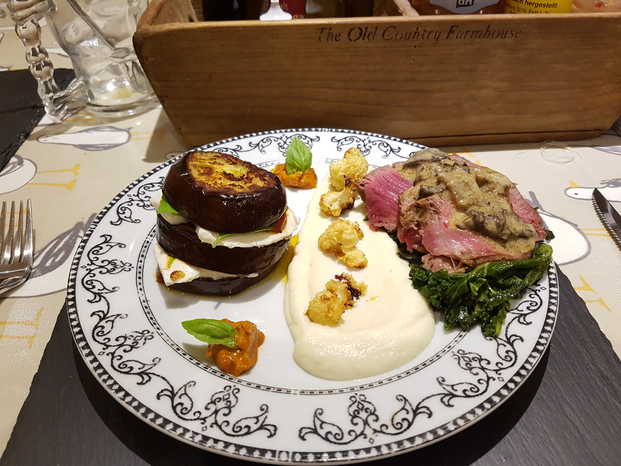


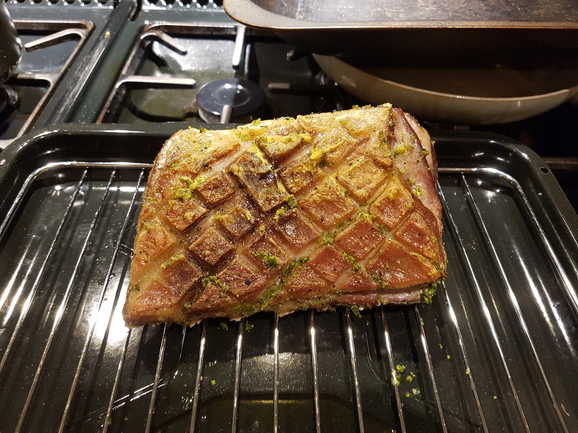
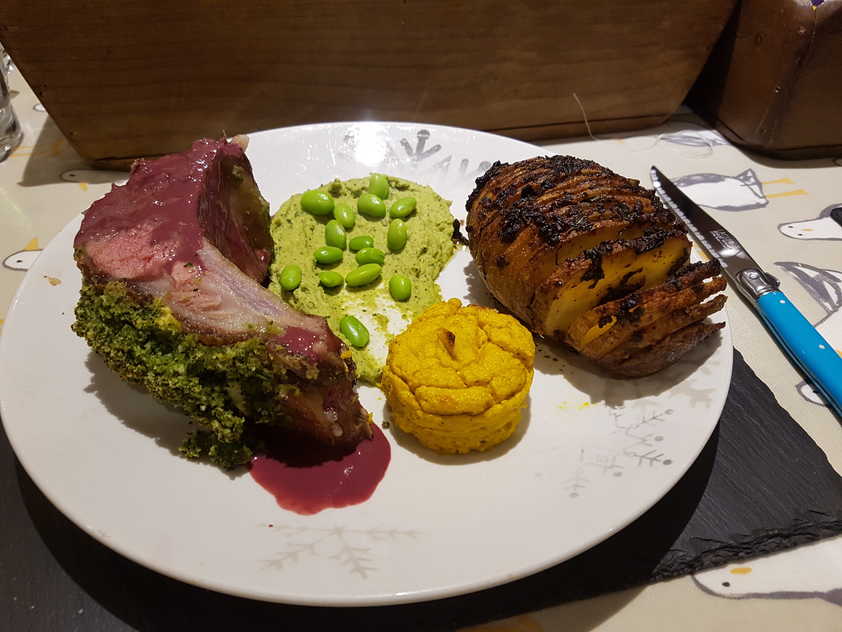

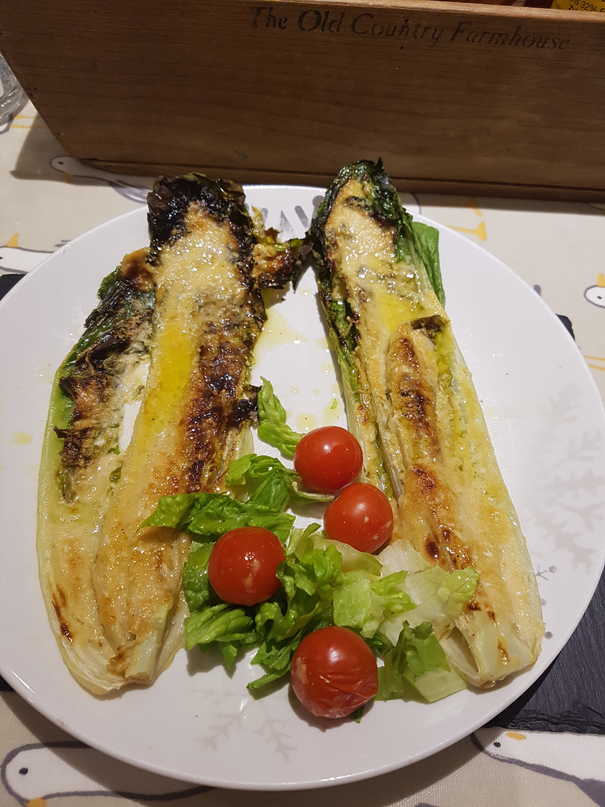

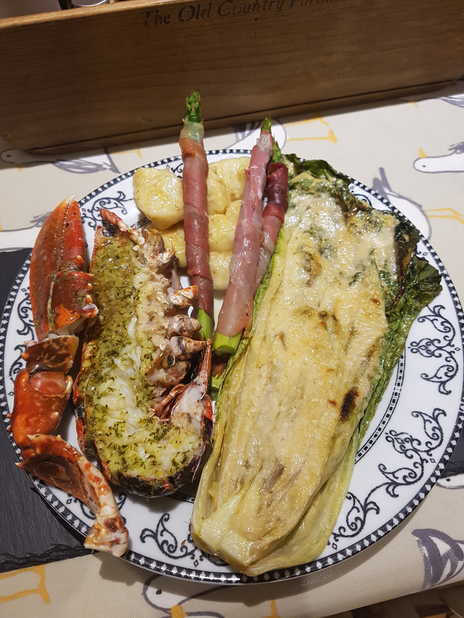
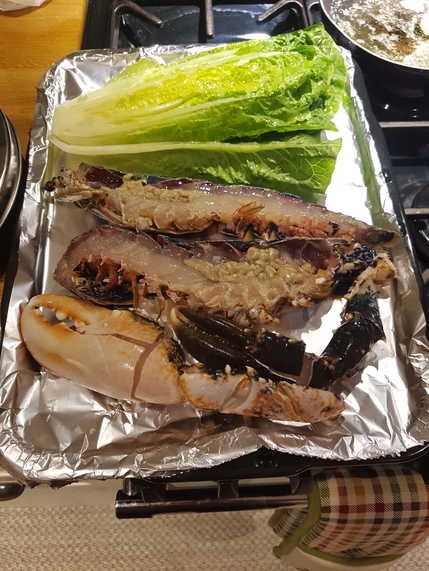

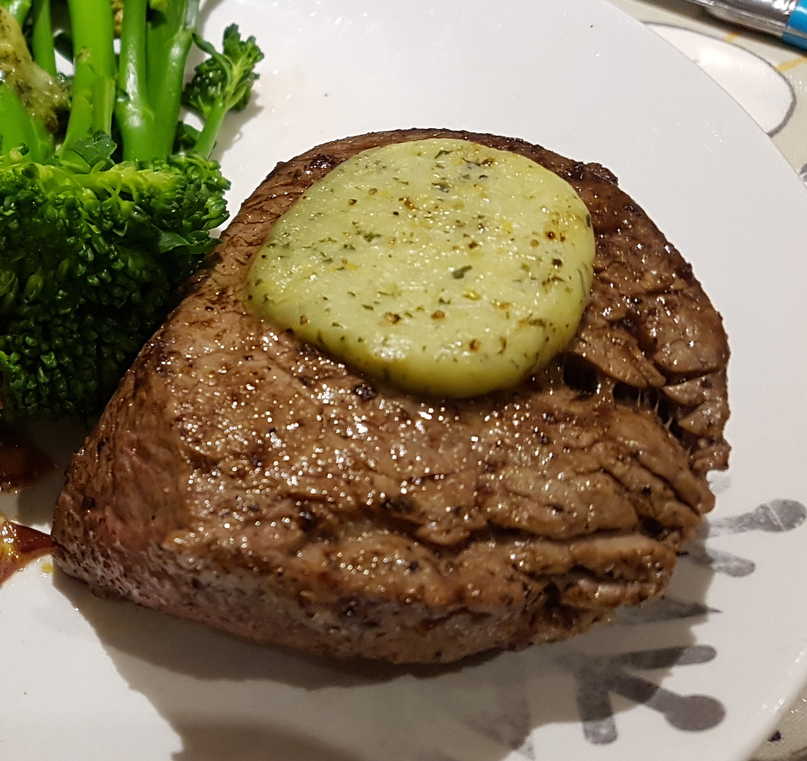
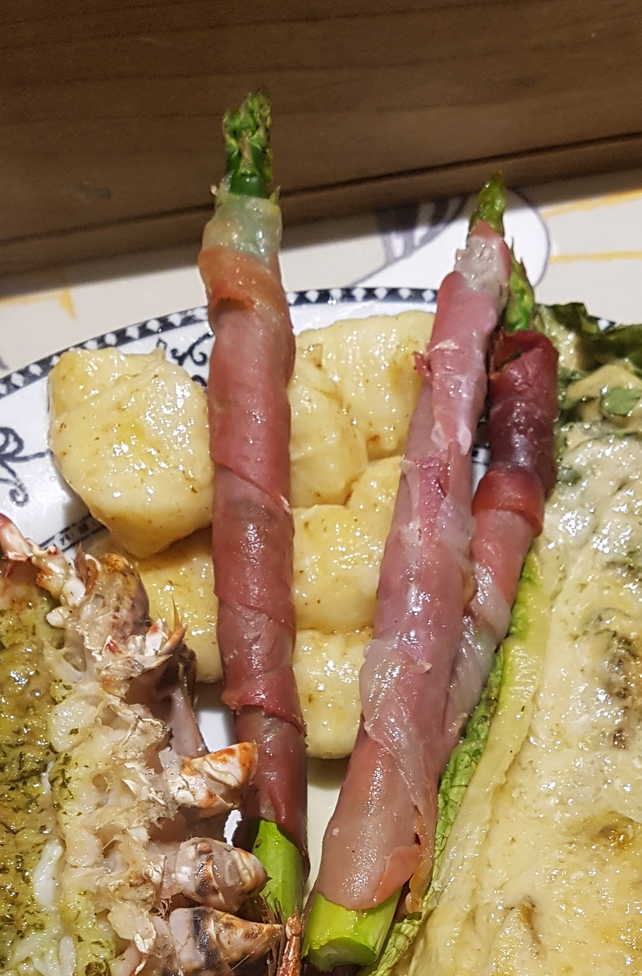

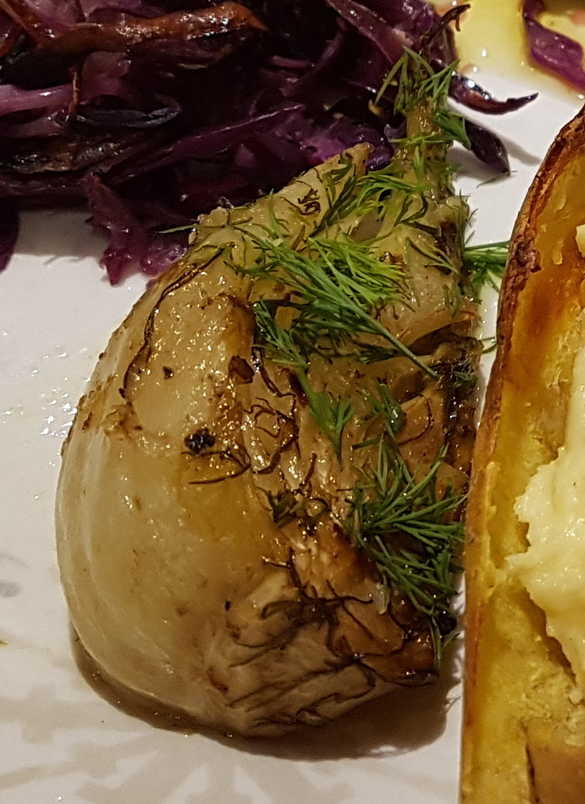
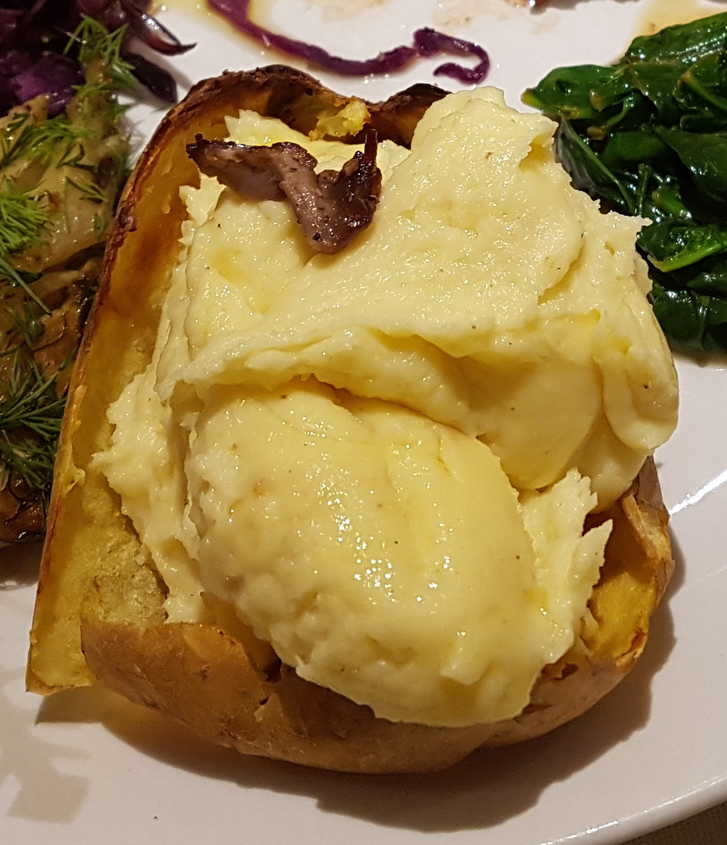
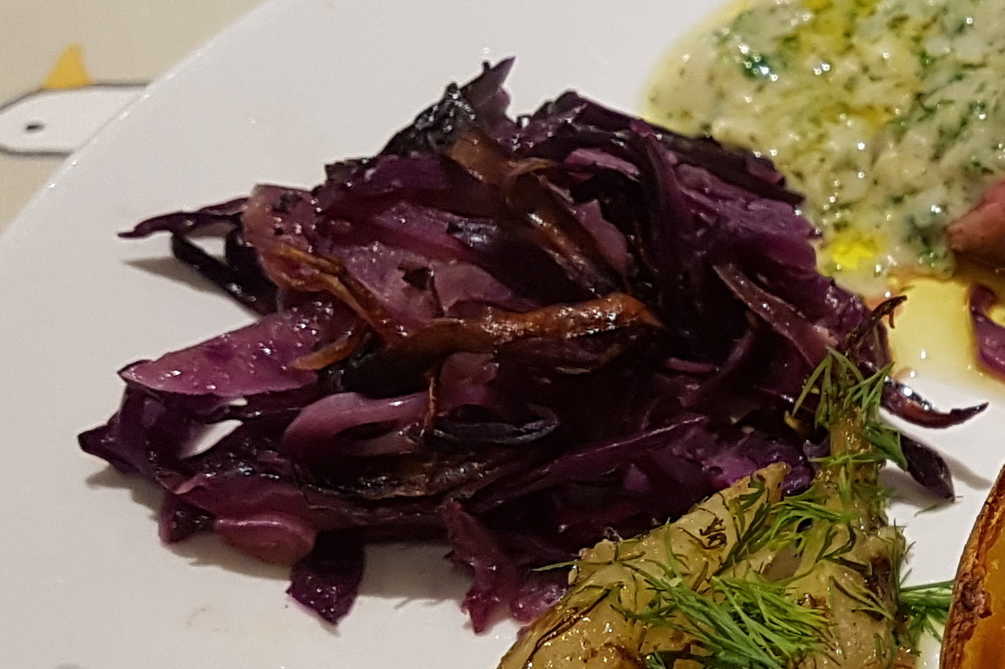
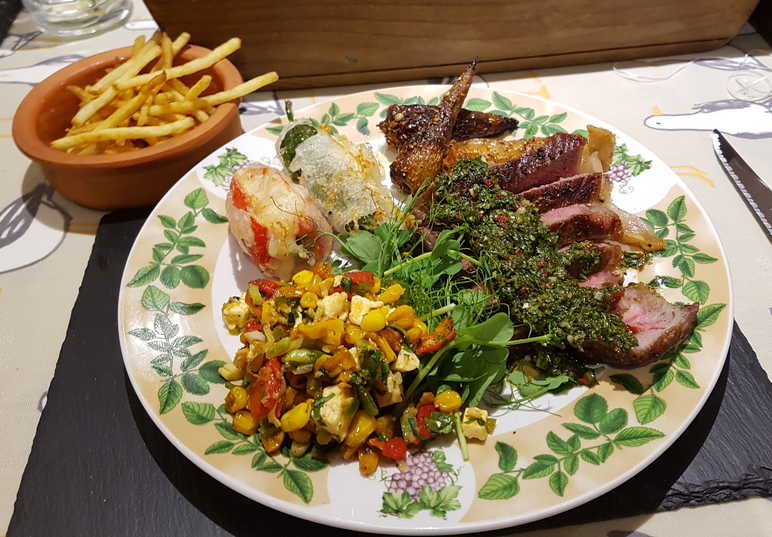
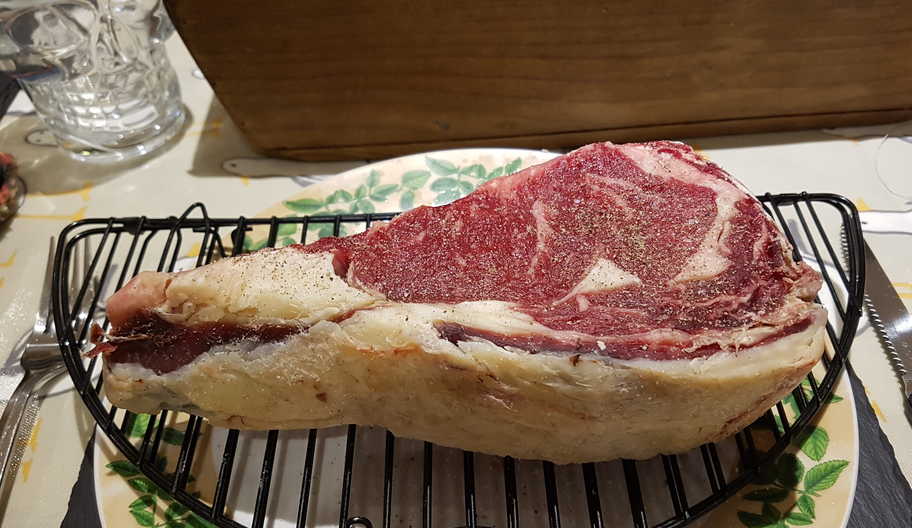
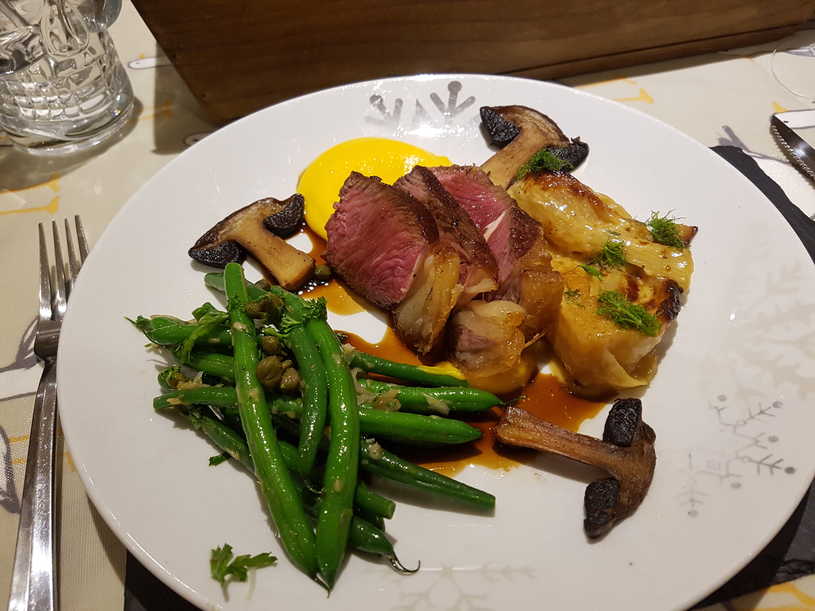

I don't see why adding anchovies wouldn't work either.